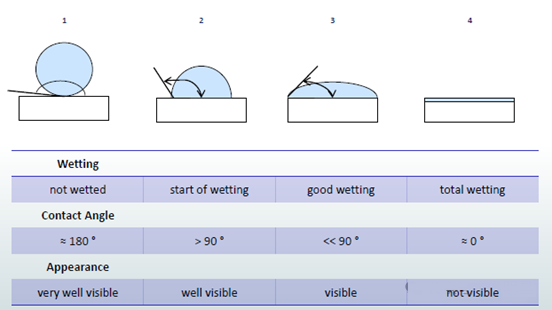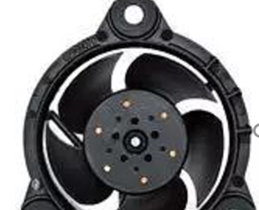In addition to spraying UV paint on the surface of car headlight mask (transparent PC material), most of inner surface is now sprayed with a layer of anti-fog paint, mainly to prevent headlights from fogging. Its role and mechanism are as follows:
1. Principle of fogging inside lamp
Vehicle headlight fogging is a common physical phenomenon. Main principle is condensation phenomenon we learned in junior high school textbooks. When temperature inside lamp drops sharply, external high-humidity air enters interior of lamp. When hot air in headlight encounters cold headlight mask, it will liquefy into small water droplets attached to inner wall of headlight cover, forming fog we see. Three conditions are required for fogging of headlights: water vapor, condensation core, and large temperature difference.
2. Difference between fogging inside lamp and water ingress
1. Fogging of headlights: Reason is that air humidity is high, causing water vapor in air to condense in headlight. Generally, condensation of water vapor when headlights fog up is not much. After turning on headlights for 30 minutes, most of water vapor will evaporate and will not remain in headlights.
2. Water inflow into headlights: After rain, car washing, and snow, a lot of water accumulates inside headlights, indicating that headlights have been seriously sealed and water has entered. At this time, there is not only a lot of fog inside headlights, but also a lot of water.
3. How to judge whether it is fogging or water ingress?
There are two main important indicators to judge whether it is fogging or water ingress, observing environment where water vapor is generated and size of water vapor.
Under normal circumstances, affected by temperature and humidity of environment, such as fogging caused by washing car or when temperature in engine compartment is high, and water mist that dissipates quickly after lamp is lit, most of them are normal fogging; if water mist does not dissipate for a long time, it is necessary to consider that lamp has water ingress failure.
If water mist is not a thin layer of white mist or fine water droplets, but serious water droplets or water accumulation, it is necessary to consider that external water has entered interior of lamp.

Fog and water ingress may seem to be same phenomenon, but they have completely different principles and effects behind them. I hope that car owners will carefully distinguish them when using them so that they can be used correctly.
4. Main factors causing fogging of car lamps
(1) Temperature field inside car lamps
Temperature is one of the biggest factors causing fogging. Temperature inside lamp is mainly caused by heat generated by light or temperature diffusion generated by engine.
Fogging area is a low-temperature area. Low-temperature area is generally located on both sides of lower part of lamp and is an area with weak light heat dissipation.
Middle part of lamp is main part with higher temperature, where high and low beam lights and turn signals are located.
A large amount of test data shows that temperature difference of lamp is result of a combination of radiation heat exchange and natural convection. If heat diffusion is hindered or weakened, movement of water vapor molecules will become slow, temperature will drop, and fogging will occur.

(2) Convection field inside automotive lamps
Convection field is divided into: internal and external
Internal: Air contained in lamp will directly affect temperature distribution inside automotive lamp, thereby transferring heat emitted by lamp to various places inside lamp, causing the overall temperature of lamp to rise. It is mainly affected by internal structure of lamp. Internal structure is compact and dense, and size gap is small, so air circulation is hindered, resulting in uneven temperature inside lamp, thereby generating water mist.
External: External circulation structure depends on number, size, position and shape of vents and breathable membranes; a good ventilation component will greatly increase gas flow and allow internal and external gases to exchange. (During early design, position and size of vents are arranged through CAE simulation experiments)


(3) Humidity field inside automotive lamps
Working form of automotive lamps is flashing, which will also affect humidity environment inside lamps. In a higher temperature environment, humidity tends to rise. In high concentration area of lamp, range of humidity in lamp will increase, causing lamp to fog in a watery environment.
(4) Properties of headlight materials
Plastic materials absorb and transport moisture from outside air. After a long period of accumulation, water vapor will penetrate into outside of headlight, causing water content inside and outside headlight to reach a state of equilibrium. When exposed to heat of lamp beads, heat of engine, and sunlight, moisture absorbed by headlight shell will evaporate from plastic material into air inside headlight, and finally condense in lower temperature area of headlight.
Headlight mask provides a condensation core for water vapor during condensation process. The smoother inner surface of mask, the smaller fog beads formed, and the less likely it is to form a foggy shape. Material of mask is a material that cannot be wetted by water, so condensation that occurs on its surface is beaded condensation.
| Material name | Water absorption (%) |
| ABS | 0.4 |
| PC | 0.3 |
| PE | 0.01 |
| PP | 0.01 |
| PS | 0.1-0.3 |
| POM | 0.12-0.25 |
| PBT | 0.1-0.25 |
| PET | 0.3-0.4 |
| PVC | 0.1-0.4 |
| PEI | 0.25 |
| PA666(NYLOM) | 1.2 |
| PA | 1.3 |
5. Preventive measures for headlight fog
1. Anti-fog coating
Working principle of anti-fog layer: use hydrophilic groups in anti-fog coating to affinity adsorb water, reduce surface tension of water, reduce contact angle between water molecules and inner surface of mask, so that water vapor infiltrates, diffuses or adsorbs on the surface of object, forming a transparent water film of uniform thickness rather than a single water droplet.

2. Desiccant
Physical desiccant
Main ingredients: highly active adsorption materials such as silica gel, alumina gel, molecular sieve, activated carbon, charcoal or minerals.
Mechanism of action: store moisture inside its structure and physically absorb moisture; Disadvantages: when in a saturated (equilibrium) state, it no longer absorbs surrounding moisture. When lamp is relit or a positive humidity difference is formed with outside world, water is released, resulting in a large amount of fog in lamp. However, with continuous use of lamp or continuous decrease in humidity of surrounding environment, desiccant will gradually restore its hygroscopic properties as it releases moisture.
Chemical desiccant
Main ingredients: calcium sulfate or calcium chloride, etc.
Mechanism of action: by chemically reacting with water to form hydrates, moisture will not be released, thereby avoiding formation of fog and ensuring dryness of lamp; Disadvantages: cannot be used for life; it is best designed to be replaceable.

3. Breathable membrane
The most effective function of breathable structure: breathable and impermeable.
Features of breathable film: It allows exchange of gas inside and outside headlight; it is a chemically synthesized material with small holes that prevent and intercept invasion of water and impurities.

4. Fan method
Principle: Fan can increase air circulation and reduce fog generation.
Disadvantages: However, in some LED headlights, fan is used as a heat dissipation device. If a special anti-fog fan is added, volume of headlight will increase and cost will also increase.


6. How to do a good job in anti-fog design for automotive lamps?
(1) Make good choices for plastic materials of automotive lamps, and try to avoid choosing raw materials with high water absorption.
(2) When designing structure of automotive lamps, ensure that internal radiation area of automotive lamps is comprehensive, leaving no dead corners, and ensure uniform heating inside automotive lamps.
(3) By designing corresponding anti-fog coating on internal surface of automotive lamp, internal water mist condenses more evenly through coating, changing original droplet-shaped condensation into a relatively flat film-like condensation method.
(4) Design convection holes in automotive lamps (CAE experimental simulation). By changing and increasing positions of convection holes, make every effort to improve convection of water vapor in automotive lamps and remove water vapor in automotive lamps.

